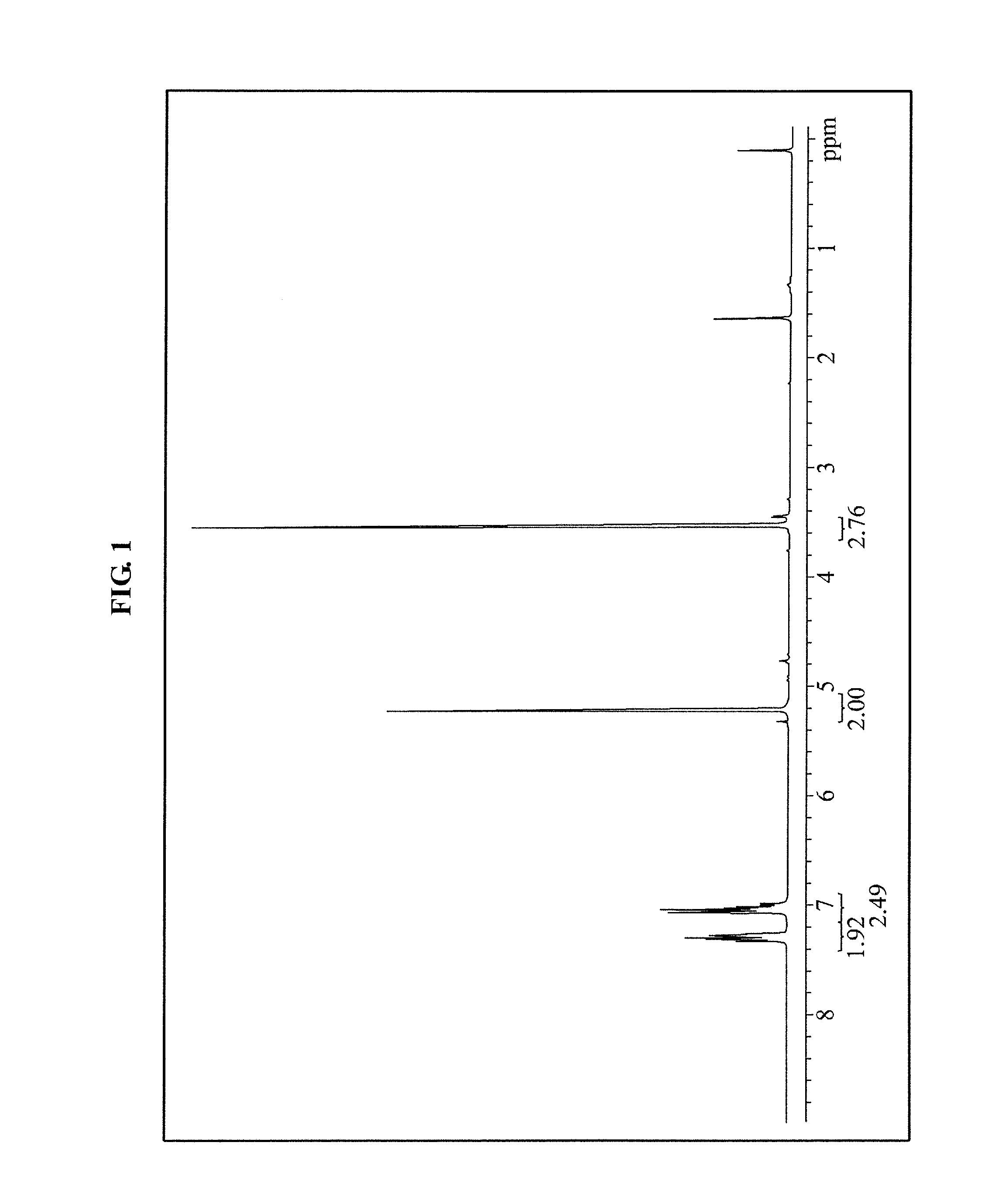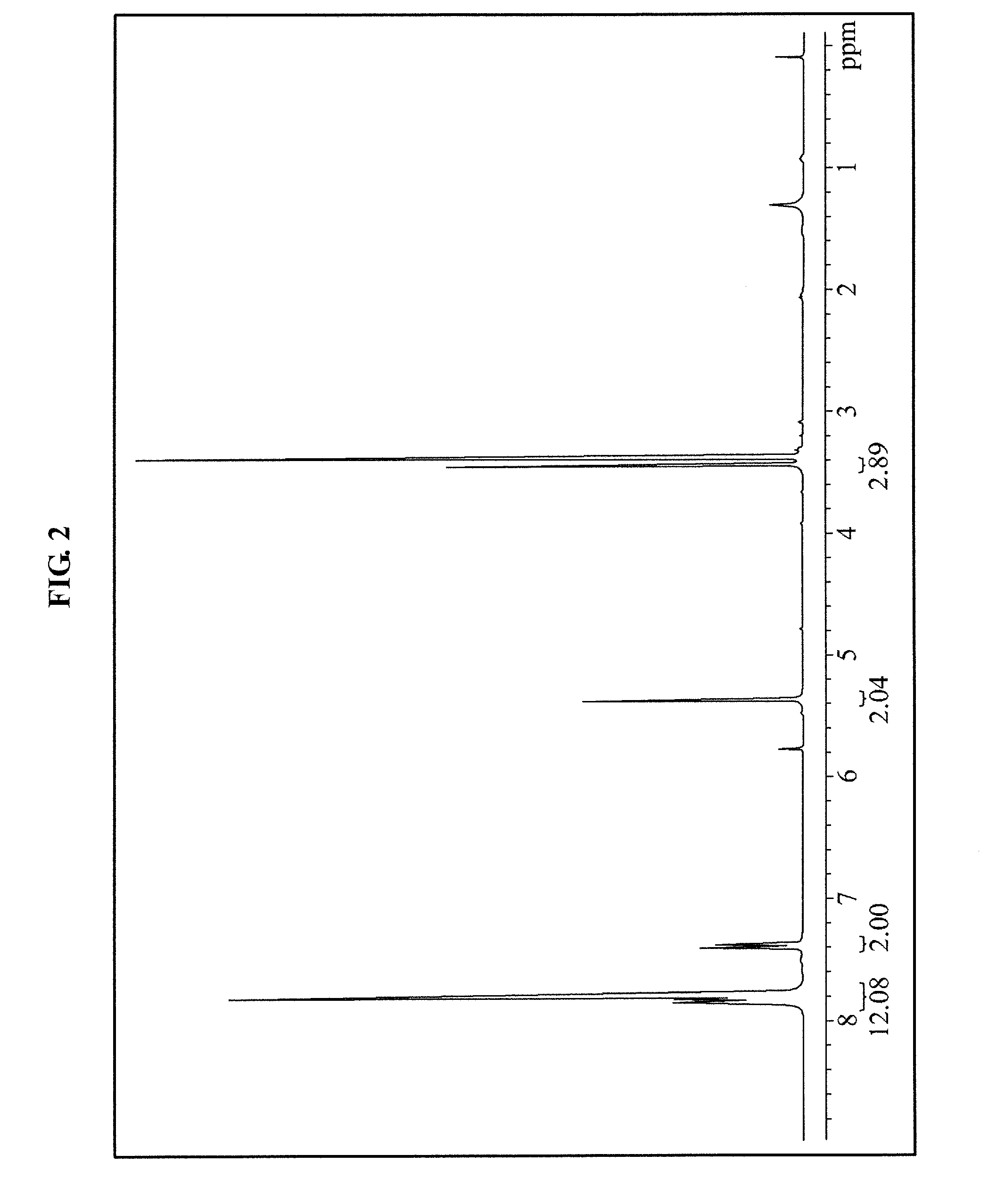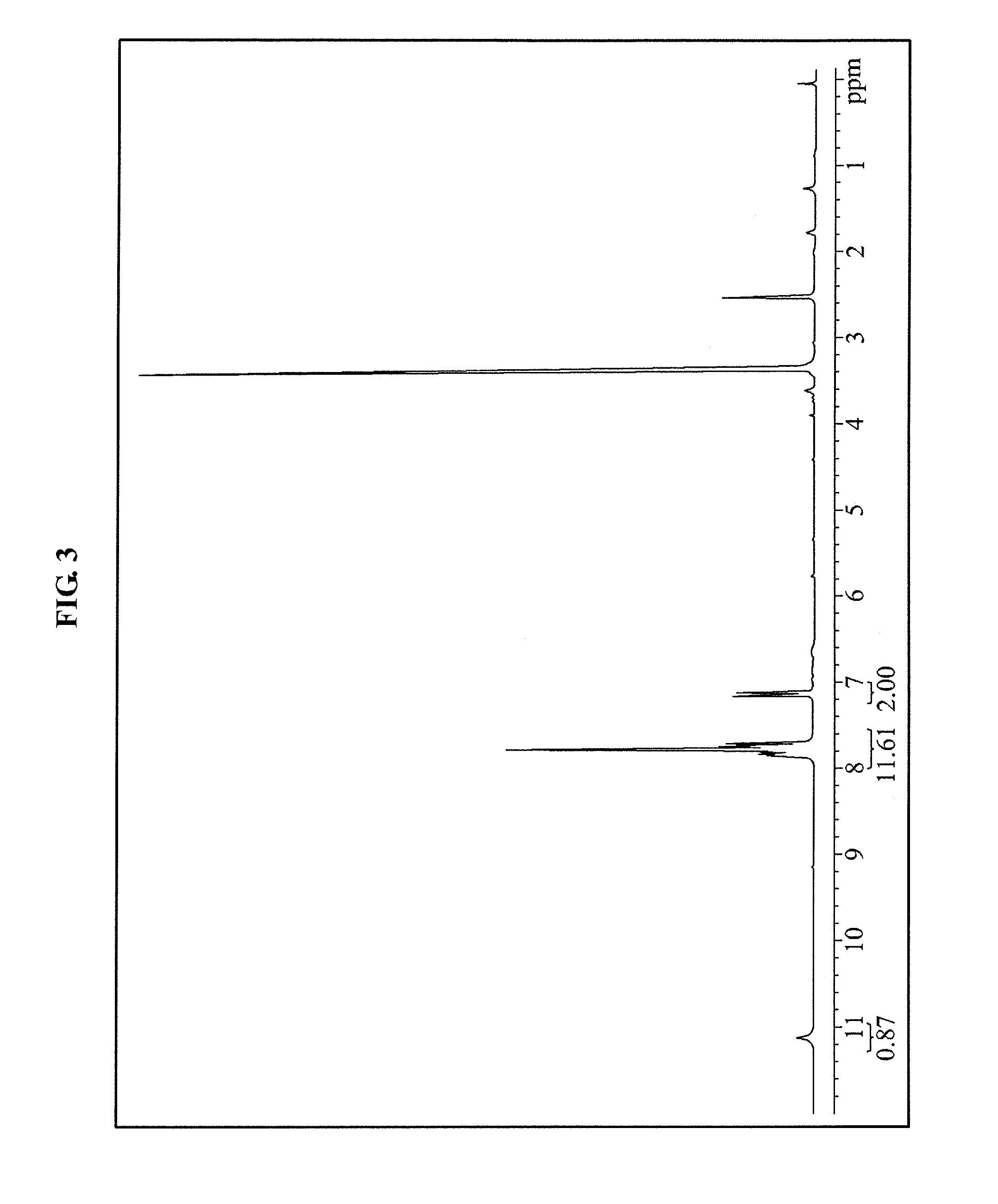Photoacid generator, copolymer, chemically amplified resist composition, and method of forming pattern using the chemically amplified resist composition
a technology of photoacid generator and resist composition, which is applied in the field of semiconductor manufacturing, can solve the problems of difficulty in forming fine patterns, affecting the quality of photoacid generators, so as to improve the etch resistance of resist patterns, improve the characteristics of line edge roughness of resist patterns, and improve the effect of resist patterns etch resistan
- Summary
- Abstract
- Description
- Claims
- Application Information
AI Technical Summary
Benefits of technology
Problems solved by technology
Method used
Image
Examples
synthesis examples
Synthesis Example 1
Methoxymethoxybenzene Synthesis
[0080]Under an ice bath, about 200 g of phenol and about 256 g of chloromethyl methyl ether were mixed and stirred in about 2 L of methylene chloride (MC), and about 740 ml of diisopropylethylamine (DIPEA) was gradually dropped. Next, the ice bath was removed and a temperature was increased, and then a synthesis reaction (see Equation 1 below) was performed while stirring for about 12 hours at room temperature. Next, distilled water was added in a reaction mixed liquid to complete the synthesis reaction and to extract an organic phase. Next, the organic phase was washed using about 0.5 N of HCl aqueous solution, distilled water, about 1 N of NaOH aqueous solution, and distilled water in the stated order, and then dried using magnesium sulphate. Next, the organic phase was filtered and concentrated to obtain about 240 g (a yield: about 81.7%) of methoxymethoxybenzene, and a structure of the methoxymethoxybenzene was observed by 1H-NMR...
synthesis example 2
diphenyl-4-methoxymethoxyphenylsulfonium trifluoromethanesulfonate salt synthesis
[0082]About 100 g of the methoxymethoxybenzene manufactured in the synthesis example 1 and about 133.1 g of phenyl sulfoxide were mixed and stirred in about 1,200 ml of an MC, and then a temperature was reduced to about −78° C. using a dry ice-aceton. Next, about 240 g of trifluoromethanesulfonic anhydride was gradually dropped and stirred for about three hours using a dropping funnel at about −78° C. to perform a synthesis reaction (See Equation 2 below). Next, the synthesis reaction was terminated when an initiator on a thin layer chromatography (TLC) disappeared. Next, about 200 g of calcium carbonate was dissolved in about 1.5 L of water, and the reaction mixed liquid was added in a solvent cooled to about 0° C. and strongly stirred for about 20 minutes. Next, an organic phase was extracted, and further stirred in a calcium carbonate aqueous solution. Next, the extracted organic phase was washed usi...
synthesis example 3
diphenyl-4-hydroxyphenylsulfonium trifluoromethanesulfonate salt synthesis
[0084]About 100 g of diphenyl-4-methoxymethoxyphenylsulfonium trifluoromethanesulfonate salt manufactured in the synthesis example 2 was mixed and stirred in about 300 ml of the MC, and about 548 ml of 6 N HCl aqueous solution was dropped and stirred at about 50° C. to perform a synthesis reaction (see Equation 3). Next, the synthesis reaction was terminated when the initiator on the TLC disappeared, and then the MC was added, and separation of phases was performed. Next, an organic phase was extracted, washed twice using brine, and dried using magnesium sulphate. Next, the organic phase was filtered and concentrated to obtain about 100 g (a yield: about 71%) of a diphenyl-4-hydroxyphenylsulfonium trifluoromethanesulfonate salt, and a structure of the diphenyl-4-hydroxyphenylsulfonium trifluoromethanesulfonate salt was observed by 1H-NMR (see FIG. 3):
[0085]1H-NMR (CDCl3, reference: tetramethylsilane): (ppm) 7....
PUM
| Property | Measurement | Unit |
|---|---|---|
| light wavelength | aaaaa | aaaaa |
| width | aaaaa | aaaaa |
| temperature | aaaaa | aaaaa |
Abstract
Description
Claims
Application Information
 Login to View More
Login to View More - R&D
- Intellectual Property
- Life Sciences
- Materials
- Tech Scout
- Unparalleled Data Quality
- Higher Quality Content
- 60% Fewer Hallucinations
Browse by: Latest US Patents, China's latest patents, Technical Efficacy Thesaurus, Application Domain, Technology Topic, Popular Technical Reports.
© 2025 PatSnap. All rights reserved.Legal|Privacy policy|Modern Slavery Act Transparency Statement|Sitemap|About US| Contact US: help@patsnap.com



